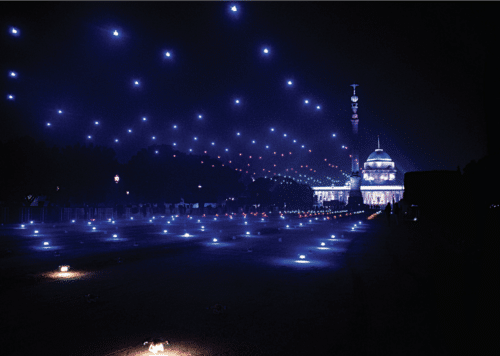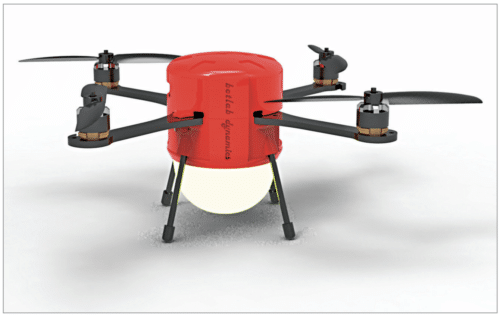Flying hundreds of drones simultaneously while controlling their flying patterns via a single software platform has always been a technical challenge, but not anymore.

During the week-long Republic Day celebrations in January this year, 1000 drones made by BotLab Dynamics, a Delhi based startup, made different formations in the sky. Drones in the colours of the Indian national flag could be seen rising, gently building a globe, and rotating in the air—imitating the Earth’s movements.
“We were asked to place all drones and recover them in less than an hour,” says Tanmay Bunkar Co-founder at BotLab Dynamics. “When we were approached by the Department of Defence, we only had 50 systems, but the demonstration required 1000!” The company took up this challenge and learned how to scale its technology quickly. They soon realised that scaling up would become less and less of a technological problem and more and more of a logistics problem.
BotLab Dynamics has demonstrated its technology for almost every military base in India—the first one being in 2019—for the Indian Army. They were the first group in India to demonstrate a fleet of ten drones from a single ground control station. What’s interesting is that these drones can talk to each other. If one of them malfunctions, it can assign its task to any other one.
BotLab Dynamics’ custom hardware suite:
- Motor Controller
- Flight Controller
- Precision GPS Module
Drone swarms are the new fireworks! Since defense hardware takes time to mature, the company also started working on drone shows. They had to come up with indigenous solutions to control the cost and build the associated software that would enable the drone show to happen. “We started with off-the-shelf components,” says Bunkar. “We knew how the controls would work—we just needed inexpensive hardware to run our logic. So, we decided to make our own systems.”
Using an RTK system and a base station on the ground, they enhanced the accuracy of their GPS by collecting data and using the data to correct the positions of the drones. “Normal GPS on a good day can get you 2m to 5m of accuracy. Our GPS can place itself within 10cm of the designated spot,” explains Bunkar.
For every site, they had deployed spectrum analysers. Then they moved on to the software part. They used animation software and wrote code that translated an image into a point lump, which was then used to generate flight trajectories. Consequently, they used simulation software to keep all the drones together. This was done to avoid collisions and to profile velocities.

BotLab Dynamics is currently working on a RISC V controller. They have a soft core working on an FPGA. In the near future, the company hopes to make its own silicon! Bunkar believes that having the necessary technical knowhow in-house is extremely important. This knowhow was exactly what helped the company grow and scale at a meteoric rate.
This article was put together by EFY’s Aaryaa Padhyegurjar from the Startup Showcase session at VLSI 2022. The session was hosted by Dhanapathy Krishnamoorthy, Principal Engineer at Intel Corporation.






